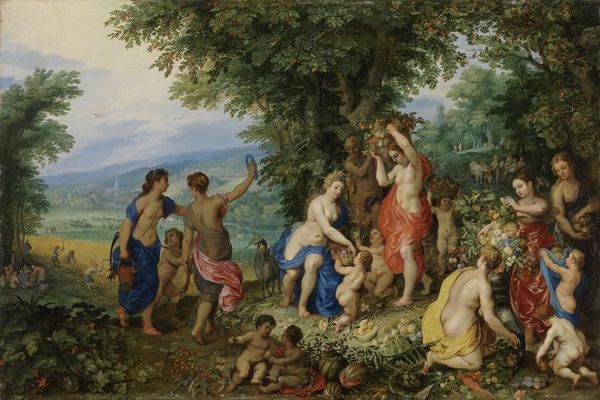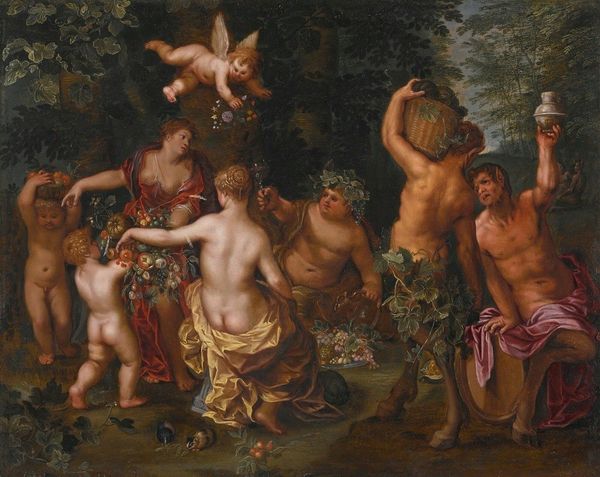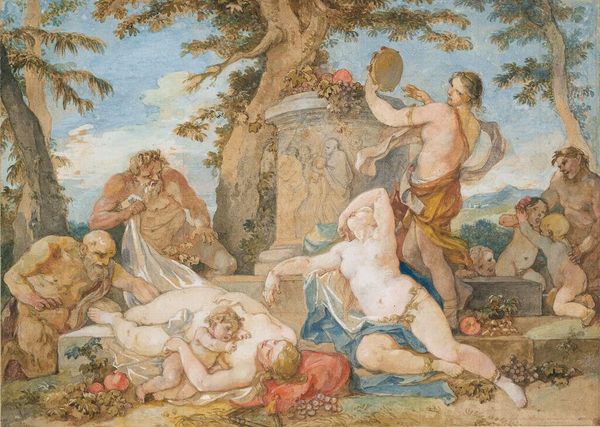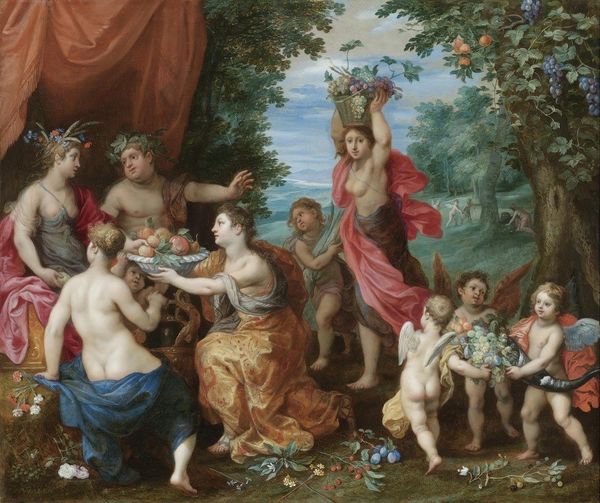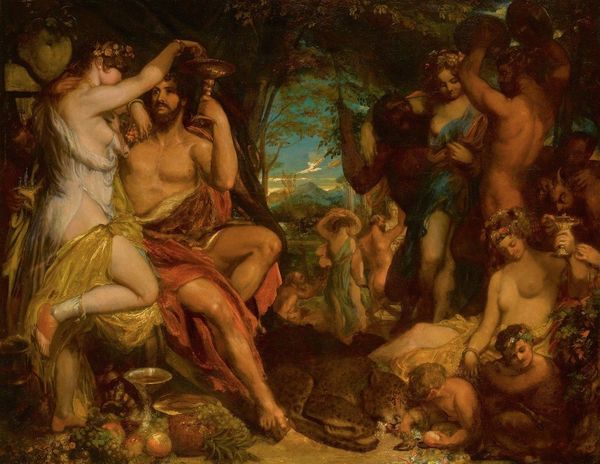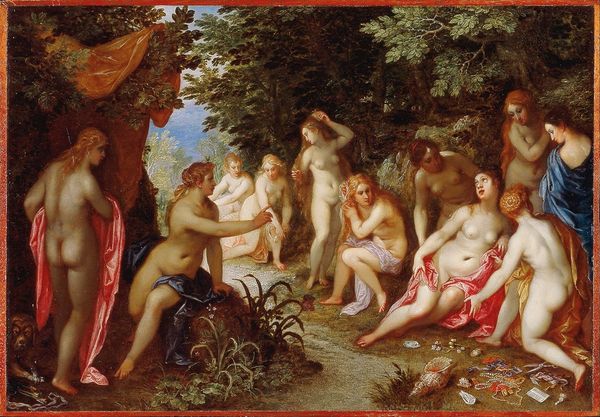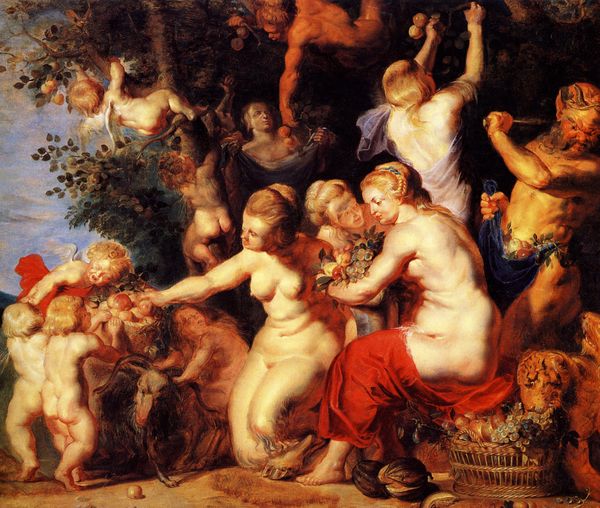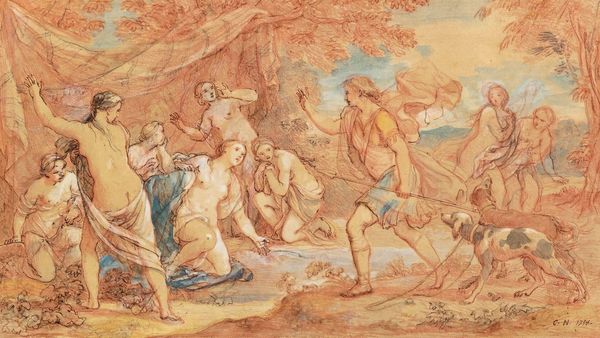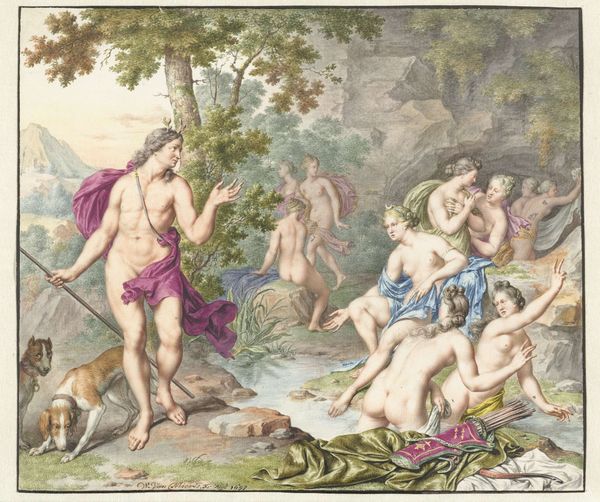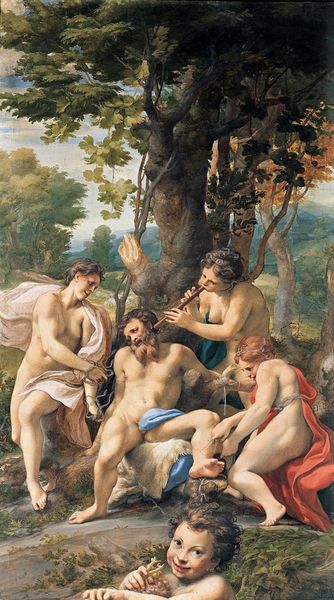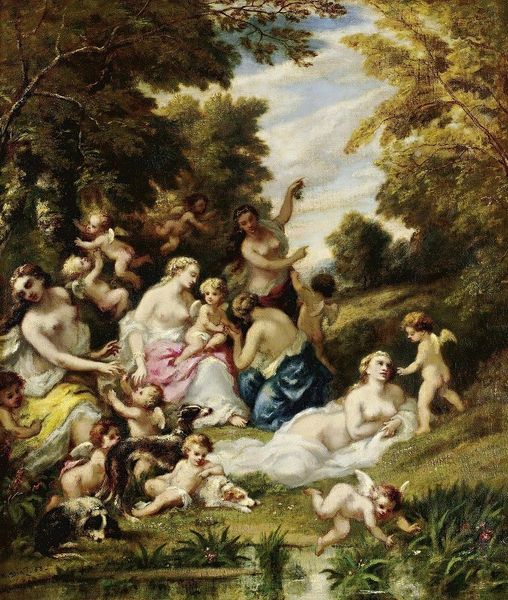
painting, oil-paint
#
allegory
#
painting
#
oil-paint
#
classical-realism
#
figuration
#
oil painting
#
underpainting
#
romanticism
#
genre-painting
#
history-painting
Copyright: Public domain
Curator: Robert William Buss’s “The Origin of Music,” dating from 1845, presents us with a rather idyllic scene. What are your initial thoughts? Editor: It strikes me as incredibly saccharine. Look at the cherubic figures, the pale colors, the almost comical arrangement. I imagine the labor involved in meticulously rendering each tiny, pink, dimpled form—almost absurd. Curator: I can see that. Formally, however, observe how Buss has arranged these figures within a pronounced arc, seemingly referencing classical friezes, distributing them in a manner that creates balance despite the asymmetry. Editor: Balance born from sheer quantity, perhaps. The number of putti, animals, instruments, plants, all scream excessive. Where was this piece meant to be hung? Was the abundance intended to showcase a patron’s wealth or fill an architectural void? The materiality reads as distinctly bourgeois—oil on canvas providing an accessibility for display in a domestic space. Curator: It certainly adheres to the allegorical traditions of its time. The painting gestures towards a mythological, pre-historic creation, doesn’t it? Each child-figure appears to be experimenting with diverse objects that evoke sounds. It presents a unified vision. Editor: United only in their privilege of leisure, it would seem! I am intrigued by the animals and their symbolic purpose. The goat, the serpent, even the birds— their contribution to music must extend from how materials were historically utilized or consumed in sonic processes, the labor required for a harpsichord or the gut strings on a lute for instance. Curator: Perhaps it's an emphasis on primal creation, pre-instrument. It attempts to capture a pure origin of the sonic, detached from structured sound, but filtered through, granted, an aristocratic vision. Editor: Yes, a very romantic sentiment, carefully framed by very tangible—and classed—materials. These little cherubs likely know little of actual origin. The whole spectacle reminds me of decorative labor performed for wealth and the expense of sound for elite spaces and amusement. Curator: An interesting perspective to apply when one views how sonic expressions often originate. Well, I found this piece rather pleasant myself. Editor: And I think about all the child labor and all the raw materials harvested that may contribute to any sense of that sonic bliss in our histories!
Comments
No comments
Be the first to comment and join the conversation on the ultimate creative platform.
